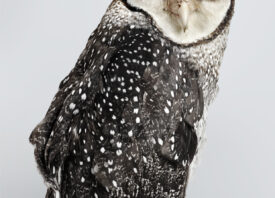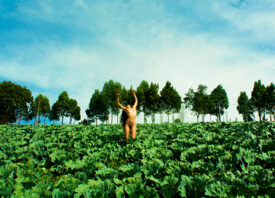Search this site
While Grieving the Australian Bushfires, An Artist Finds Hope in Nature


“Bleeding Heart Doves are named for their thatch of breast feathers that mimics a chest soaked with blood,” the artist Leila Jeffreys says. Endemic to the Philippines, the Luzon Bleeding-heart is listed as near threatened, facing pressure from deforestation and habitat destruction. In Jeffreys’s portrait of one bird from this species–now on view at Olsen Gallery in Sydney as part of her exhibition The wound is the place where the light enters–the breast does, in fact, appear to be bloodstained.
As the bushfires of 2019 to 2020 ravaged Australia’s east coast, Jeffreys found herself returning to that portrait; the natural red markings on the chest became symbolic of the many wounds inflicted on our planet and its inhabitants. According to estimates, the unprecedented fires affected 180 million birds in Australia. Some of their bodies were dug from piles of ash, and others were found washed to shore after being pulled out to sea. Many of the birds who survived later died of starvation, exposure to predators, and injuries they’d sustained during the fires.
It was during this time of unfathomable loss that the idea for The wound is the place where the light enters was born. Jeffreys found her title in a line from a Rumi poem; the exhibition features photographs of birds, all with natural red markings. The birds wear their “wounds” with grace. Together, they speak to our collective mourning; for Jeffreys, they’re also enduring reminders of the importance of facing that grief head-on—rather than turning our eyes away. From pain, love flows.
Jeffreys’s work with birds has taken her around the world; she’s photographed puffins in Iceland, the glossy black cockatoos on Kangaroo Island, and, of course, the native pigeons of the Phillipines. She dreams of working with an albatross. For years, the artist has worked with conservationists, sanctuaries, and ornithologists, bringing with her a mobile studio so that the birds can be photographed where they’re most comfortable. A carer or rescuer will remain present, and Jeffreys will take the time to get to know each bird on his or her own terms.
When the birds are relaxed and feel safe, their true personalities shine. At the National Threatened Species Institute (NTSI), she was able to meet a Moluccan Cockatoo, a species that has declined in recent years due to habitat loss and illegal trapping. The individual bird Jeffreys photographed enjoyed the time they spent together so much that she “politely declined” to leave after the session ended. She’s featured prominently in the exhibition at Olsen Gallery.
The bonsai tree becomes a recurring motif throughout the exhibition; upon its branches perch white zebra finches, Cordon-bleu finches, and more. “I selected Bonsais as they are symbols of harmony and balance,” the artist says. “Zen Buddhists see bonsais as an object of contemplation, which is an idea that repeats throughout my exhibition.”
Whereas birds in “real life” are always moving, you can stare at the birds in these photographs forever–and it’s an exhibition that encourages us to take our time. Seeing a Jeffreys portrait for the first time is a bit like seeing a bird in flight for the first time; you can almost feel your heart thumping in your chest. Perhaps that’s down to the awe of the photographer herself, who approaches each bird, from the most common to the most elusive, with the same sense of curiosity and wonderment. Every bird has her secrets.
The Luzon Bleeding-heart is no exception: no one knows for certain why they have these blood-red markings. “I asked Tim Low (Australia’s best ecologist),” Jeffreys recently shared on Instagram. “He simply said what we see is different to what they see. We see a wound. But for example, a simple suggestion could be that the female bleeding heart dove might see a plume of beautiful bright red feathers and be attracted to the boy with the biggest, brightest patch.”
It reminds me of something else Tim Low once said, a phrase that comes back to me time and again while looking at these photographs: “Everything alive is essentially a mystery.” See The wound is the place where the light enters at Olsen Gallery through this Saturday, October 29th.





All images © Leila Jeffreys

